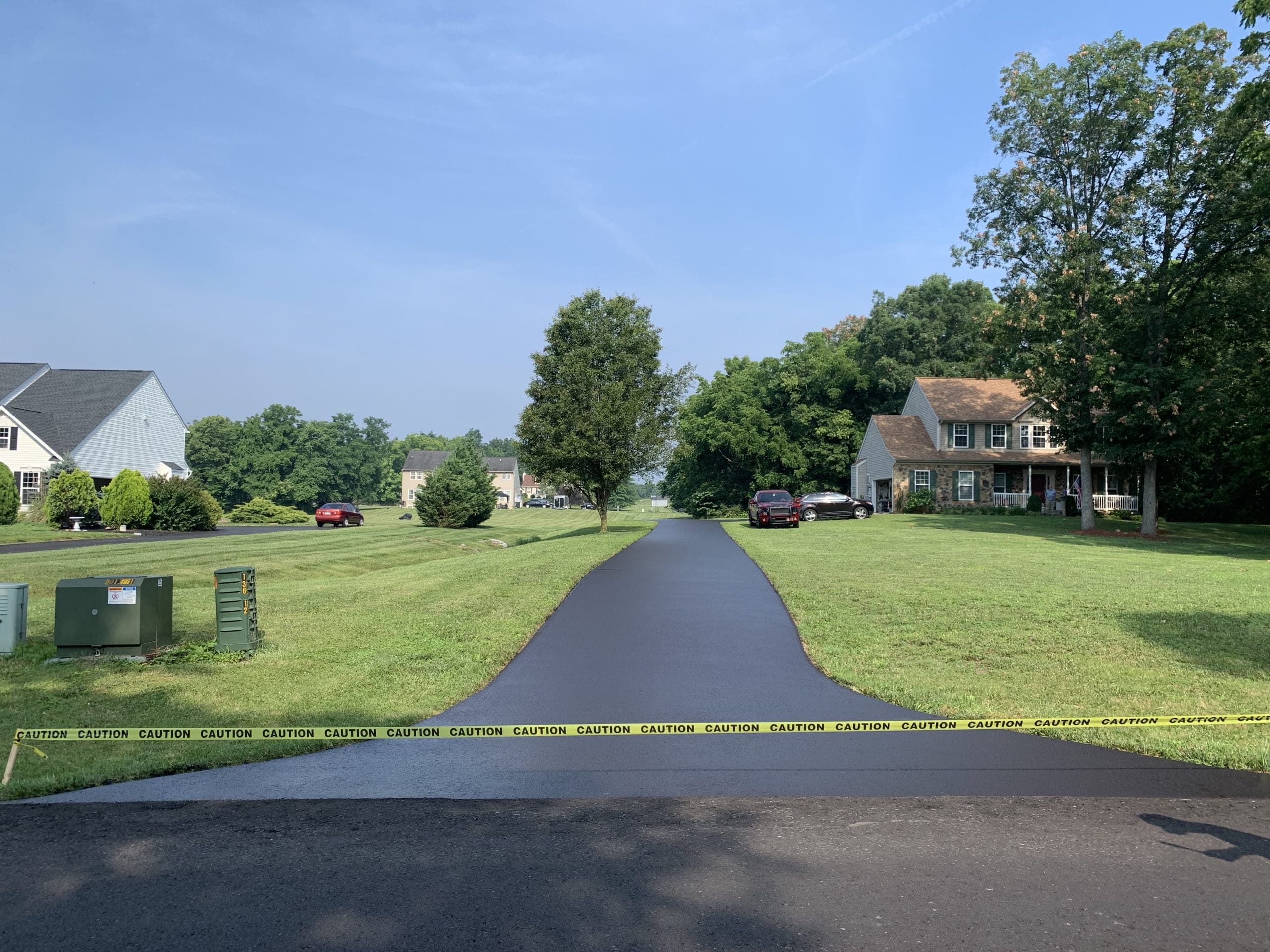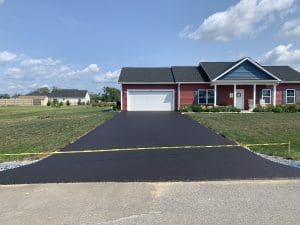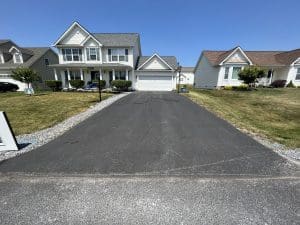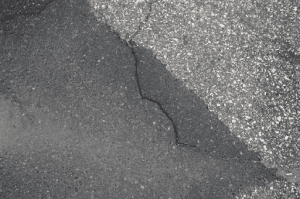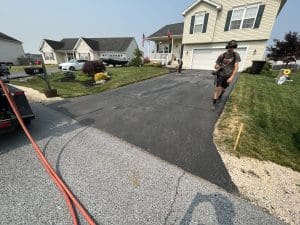Sealcoating in Extreme Weather: Tips for Harsh Climates
When it comes to safeguarding your asphalt surfaces, sealcoating is your best ally. While sealcoating’s benefits are widely recognized, it’s crucial to delve into its significance in extreme weather conditions. Harsh climates, including blistering heat, freezing cold, and heavy rainfall, present unique challenges to the efficacy of sealcoating. In this article, we’ll explore the ins and outs of sealcoating in extreme weather and offer valuable insights on how to overcome these challenges.
Understanding the Vital Role of Sealcoating
Before delving into the intricacies of sealcoating in extreme weather, let’s establish why sealcoating is an absolute essential for pavement maintenance. Sealcoating acts as a protective barrier, warding off moisture, UV rays, and other damaging elements from infiltrating the asphalt surface. This protective layer significantly prolongs your pavement’s lifespan, reducing the need for costly repairs and replacements.
Moreover, sealcoating enhances your pavement’s aesthetic appeal, giving it a fresh, sleek, black finish that elevates the overall look of the area. It also fills in minor cracks and imperfections, providing a smooth, even surface for both vehicles and pedestrians.
Sealcoating doesn’t just shield your pavement from external threats; it also plays a pivotal role in preventing internal damage. Constant exposure to traffic, harsh weather conditions, and oxidation can lead to asphalt deterioration over time. This deterioration manifests as cracks, potholes, and structural damage, jeopardizing the safety and functionality of your pavement.
By applying a sealcoat, you create a protective shield that thwarts water from seeping into the pavement, thereby reducing the risk of these damages. The sealcoat acts as a barrier, minimizing the impact of UV rays, which can render the asphalt brittle and prone to cracking. Regular sealcoating preserves your pavement’s structural integrity and extends its life, ultimately saving you time and money on extensive repairs.
The Role of Sealcoating in Pavement Maintenance
Sealcoating assumes a pivotal role in pavement maintenance by providing a protective barrier that shields asphalt from deterioration. Over time, exposure to harsh weather conditions, traffic, and oxidation can cause the pavement to deteriorate, leading to cracks, potholes, and structural damage.
Applying a sealcoat acts as a shield, preventing water from penetrating the pavement and reducing the risk of these damages. It also minimizes the impact of UV rays, which can make the asphalt brittle and prone to cracking. Thus, regular sealcoating preserves the structural integrity of your pavement and extends its lifespan.
In addition to protection, sealcoating offers a slew of other advantages. It provides a smoother surface for vehicles and pedestrians, reducing the risk of accidents and injuries. The fresh, sleek finish of a newly sealcoated pavement elevates the overall aesthetic appeal of the area, making it more visually appealing and inviting.
Moreover, sealcoating helps stave off oxidation, which occurs when asphalt is exposed to oxygen over time. Oxidation causes the pavement to lose its flexibility and become more susceptible to cracking and crumbling. By applying a sealcoat, the asphalt is shielded from oxygen, preventing oxidation and preserving its durability.
How Weather Conditions Affect Sealcoating
Extreme weather conditions introduce unique challenges to the sealcoating process. The scorching heat, freezing cold, or heavy rainfall can impact the application and drying process, potentially affecting the final result. Therefore, it’s crucial to account for weather conditions when planning sealcoating projects in harsh climates.
High temperatures can cause the sealcoat to dry too rapidly, resulting in uneven application and reduced effectiveness. Conversely, freezing temperatures can impede the drying process, leading to an extended curing period. This prolonged curing time can delay the reopening of the pavement to traffic, inconveniencing drivers and pedestrians.
Heavy rainfall can also present challenges during sealcoating projects. Water can mix with the sealcoat, diluting its efficacy and compromising its ability to form a robust protective barrier. Additionally, rainwater can create puddles on the freshly applied sealcoat, leading to an uneven surface and potential damage.
To surmount these weather-related obstacles, sealcoating contractors must diligently monitor weather forecasts and tailor their projects accordingly. They may need to adjust the timing of the application to avoid extreme temperatures or precipitation. Utilizing specialized sealcoating products designed for specific weather conditions can also help ensure optimal results.
In summary, comprehending the impact of weather conditions on sealcoating is paramount for achieving long-lasting and effective pavement maintenance. By considering these factors and implementing appropriate strategies, sealcoating projects can withstand extreme weather conditions while delivering the desired protection and durability.
Preparing for Sealcoating in Extreme Weather
Successful sealcoating in extreme weather necessitates meticulous planning and preparation. Here are some vital factors to take into account:
- Evaluating the Weather Conditions
Before commencing any sealcoating project, it’s imperative to assess the prevailing and forecasted weather conditions. Extreme heat can expedite the drying process, making it challenging to achieve a smooth and even application if not done swiftly. Conversely, freezing temperatures can delay the drying and curing of the sealcoat, leading to a compromised outcome.
Similarly, heavy rainfall can create adverse conditions for sealcoating projects. Excess moisture can dilute the sealcoat mixture, affecting its viscosity and overall performance. Moreover, rainwater can wash away the fresh sealcoat, jeopardizing its adhesion and longevity. Carefully evaluating the weather conditions allows you to choose the most suitable time for your sealcoating project.
- Necessary Equipment for Sealcoating in Harsh Climates
Sealcoating in extreme weather may necessitate specialized equipment to ensure a successful outcome. For instance, high-temperature sealcoating equipment can be invaluable in hot climates, facilitating optimal application and drying times. This equipment affords better control over temperature and viscosity, resulting in a more durable and long-lasting sealcoat.
Furthermore, in cold climates, heaters and insulated storage tanks can help maintain the necessary temperature for the sealcoat material, promoting proper curing and adhesion.
- Techniques for Sealcoating in Hot Climates
Hot climates present their own set of challenges for sealcoating. However, with the right techniques, it’s possible to achieve successful results. Here are some key strategies:
Timing and Temperature: In hot weather, timing is paramount. Schedule the application during the cooler parts of the day, such as early morning or late afternoon, to minimize evaporation and facilitate proper drying. This allows the sealcoat to bond effectively with the asphalt surface, resulting in a more robust protective layer. Additionally, ensure the pavement temperature falls within the recommended range, as excessively hot asphalt surfaces can affect the application and curing process. Monitoring pavement temperature is vital for optimal results.
Dealing with Heat-Related Challenges: Hot weather can pose challenges by accelerating the drying times. To overcome this, consider adding a rejuvenating agent to the sealcoat mixture. This agent helps extend the open time, allowing for a smoother application by slowing down the evaporation process. This, in turn, gives the sealcoat ample time to level and bond effectively. Ensuring proper hydration and protection from direct UV rays can also prevent premature drying. Covering the freshly sealed surface with shade or using temporary reflective coverings can maintain a consistent curing process.
- Strategies for Sealcoating in Cold Climates
Cold climates introduce unique challenges to the sealcoating process. However, with the right strategies, you can achieve successful results even in freezing temperatures. Here are some techniques to consider:
Understanding Cold Weather Limitations: It’s essential to acknowledge that sealcoating in extremely cold weather may not yield the same results as in milder conditions. Cold temperatures can prolong the drying and curing process, so it’s crucial to adjust expectations accordingly. The sealcoat may take longer to cure fully, but with the right techniques, your pavement can still benefit from the additional protection.
Overcoming Cold Weather Challenges: In cold climates, preheating the sealcoat material before application is crucial. This process improves flow and ensures proper adhesion. Using heated asphalt emulsion can help achieve the desired viscosity and facilitate a smoother application process. It’s also recommended to use additives specifically designed for cold weather conditions, as they enhance durability and curing time. Taking advantage of warmer periods during colder months and employing insulating blankets or burlap covers to retain heat can expedite the curing process and ensure optimal results.
- Sealcoating in Wet Conditions: What You Need to Know
Rainfall can significantly impact the sealcoating process, and it’s crucial to be well-prepared when sealcoating in wet conditions. Here are some important considerations:
The Impact of Rain on Sealcoating Processes: Applying sealcoat in wet weather can introduce various challenges. Rainwater can dilute the sealcoat mixture, affecting its viscosity and overall performance. Moreover, it can result in the washout of the fresh sealcoat, jeopardizing its adhesion and longevity. Additionally, excess moisture can prolong the curing time, leading to delays in reopening the surface for traffic. Proper handling of wet conditions is essential to achieve optimal results.
Tips for Successful Sealcoating Despite Rainfall: To tackle wet conditions, meticulously monitor the weather forecast. Avoid scheduling sealcoating projects during periods of heavy rainfall, as it increases the risk of a compromised sealcoat. Instead, opt for drier days or consider using temporary protective coverings to shield the newly sealed surface from rainwater. In situations where rainfall occurs shortly after sealcoating, swift action is necessary. Remove any standing water, inspect for imperfections, and apply touch-up sealcoating where needed to rectify any potential damage caused by the rain.
Sealcoating in extreme weather requires careful planning, proper equipment, and a thorough understanding of the challenges posed by scorching heat, freezing temperatures, or heavy rainfall. By following the tips and strategies outlined in this article, you can optimize the effectiveness and longevity of sealcoating projects in harsh climates. Remember, a well-maintained pavement not only enhances aesthetics but also protects your investment in the long run. When it comes to sealcoating, trust Top Gun Sealcoating to ensure your asphalt surfaces withstand the harshest weather conditions.
